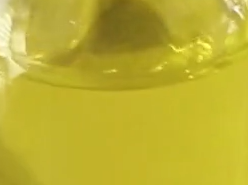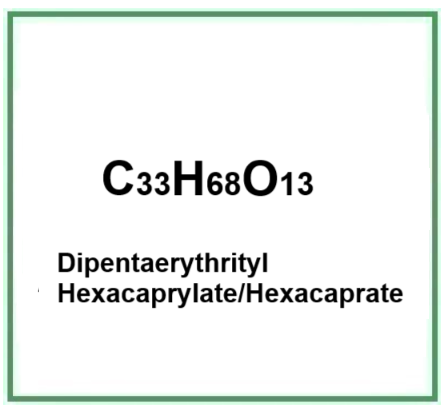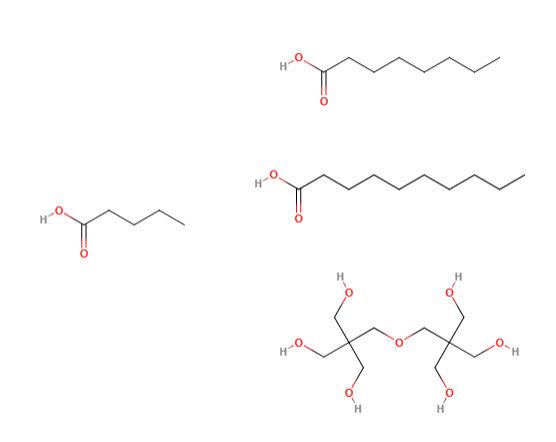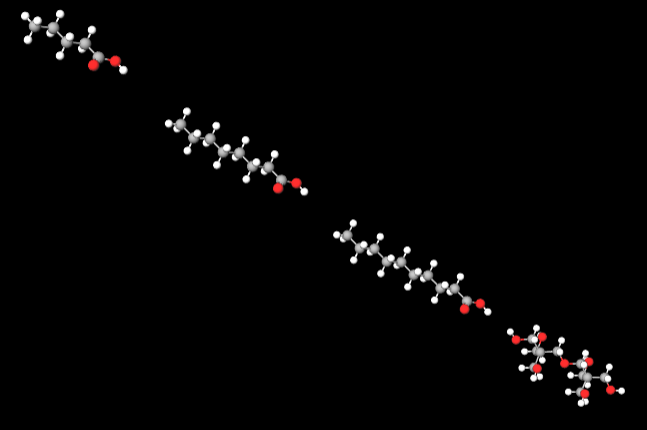Dipentaerythrityl Hexacaprylate/Hexacaprate is a chemical compound, ester of caprylic acid and capric acid.
The name describes the structure of the molecule
- "Dipentaerythrityl" indicates the base alcoholic structure to which the esters are attached. It's a polyol, meaning it has multiple functional alcohol groups.
- "Hexacaprylate/Hexacaprate" are the esterified parts of the compound. "Hexacaprylate" and "Hexacaprate" are esters derived from caprylic and capric acids, respectively, which are saturated fatty acids.
Description of raw materials used in production
- Pentaerythritol - A polyalcohol compound used as the backbone for ester production.
- Caprylic Acid (Hexanoic Acid) and Capric Acid (Decanoic Acid) - Fatty acids used to esterify the pentaerythritol.
Step-by-step summary of industrial chemical synthesis process
- Preparation - Pentaerythritol and the fatty acids are mixed in the desired ratios.
- Esterification - The mixture is heated in the presence of an acid catalyst to facilitate the esterification reaction.
- Purification - Once the reaction is complete, the product is purified to remove impurities and unreacted compounds.
- Separation - The formed esters are separated from other components through distillation or other methods.
It appears as a colorless to yellow liquid.

What it is for and where
Cosmetics
Surfactant - Emulsifying agent. Emulsions are thermodynamically unstable and are used to soothe or soften the skin and emulsify, so they need a specific, stabilising ingredient. This ingredient forms a film, lowers the surface tension and makes two immiscible liquids miscible. A very important factor affecting the stability of the emulsion is the amount of the emulsifying agent. Emulsifiers have the property of reducing the oil/water or water/oil interfacial tension, improving the stability of the emulsion and also directly influencing the stability, sensory properties and surface tension of sunscreens by modulating the filmometric performance.
Skin conditioning agent. It is the mainstay of topical skin treatment as it has the function of restoring, increasing or improving skin tolerance to external factors, including melanocyte tolerance. The most important function of the conditioning agent is to prevent skin dehydration, but the subject is rather complex and involves emollients and humectants that can be added in the formulation.
Smoothing. Ingredient that tends to make the surface of the skin uniform helping to reduce the roughness or irregularities of the stratum corneum.
Viscosity control agent. It controls and adapts, Increasing or decreasing, viscosity to the required level for optimal chemical and physical stability of the product and dosage in gels, suspensions, emulsions, solutions.
Commercial Applications
Cosmetics. Used in creams and lotions as an emollient to soften and smooth the skin.
Hair Care Products. Incorporated into shampoos and conditioners to impart shine and softness to hair.
Makeup. Added to products like lipsticks and foundations to enhance texture and provide a smooth finish.
Sun Care Products. Incorporated into sun lotions to improve spreadability and skin feel.
- Molecular Formula C33H68O13
- Molecular Weight 672.9 g/mol
- CAS 68130-24-5
- UNII 554N82UWVW
- EC Number 268-581-5
- DTXSID801015052
Synonyms:
Dipentaerythritol valerate octanoate decanoate
![]() Dipentaerythrityl Hexacaprylate/Hexacaprate
Dipentaerythrityl Hexacaprylate/Hexacaprate 




